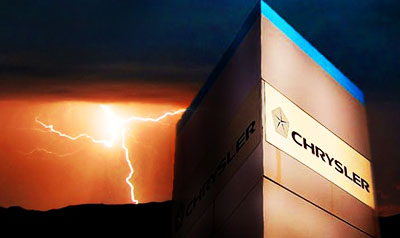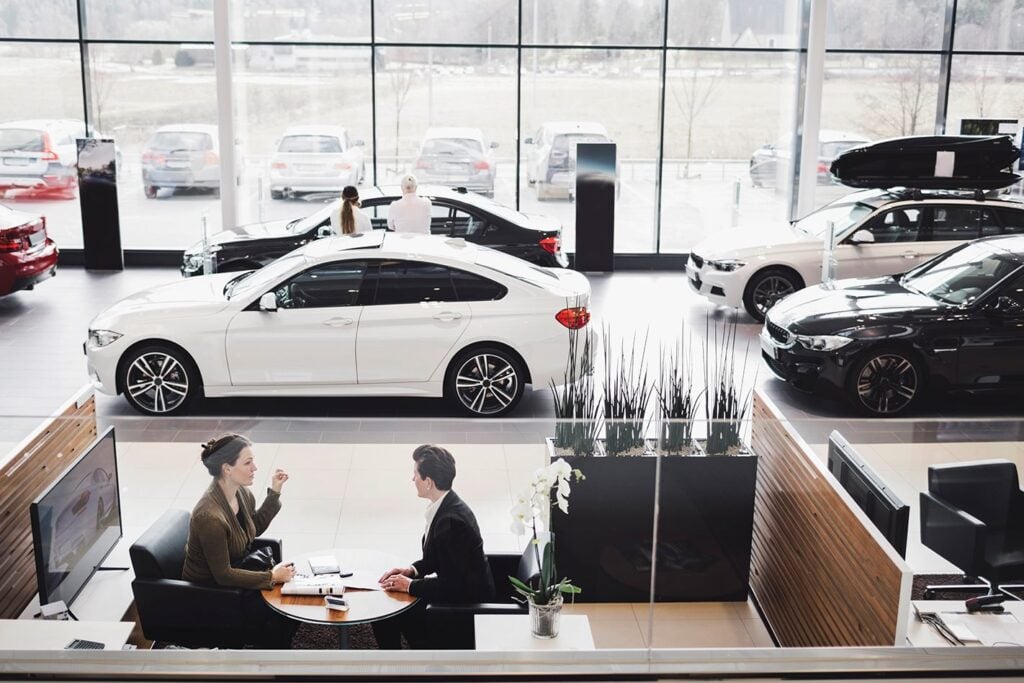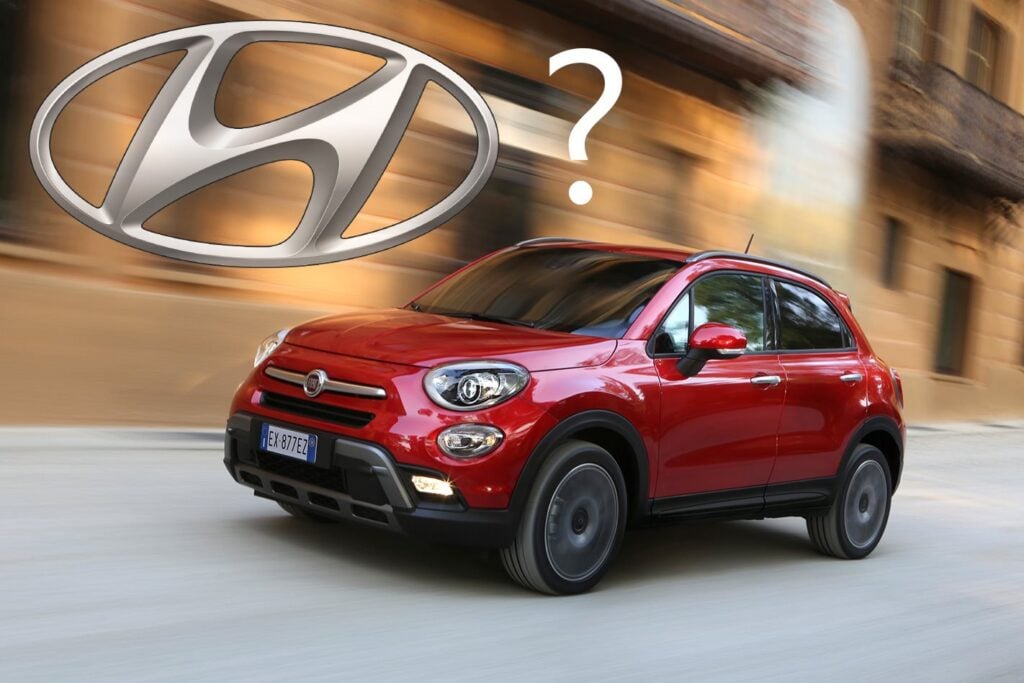If nothing else, Chrysler’s history has been fun to follow; a television mini-series in the making.
Before World War I there was already a Big Three in Detroit, but the names were Ford, Buick and Maxwell. That last firm sold an impressive 60,000 cars in 1914, but had “run off the rails” less than a decade later and was taken over by ex-Buick boss Walter P. Chrysler in 1923.Now, 86 years later, Walter P’s dream is off the rails, with Chrysler in bankruptcy. So it goes…Walter P. Chrysler was ambitious, establishing Plymouth and Desoto in 1928, the year he bought out the Dodge brothers’ operations. He’d been so successful, the next year Chrysler started construction on one of the coolest-looking skyscrapers (even today) in New York City.Chrysler history after World War II was a soap opera. There was chromed and finned glory, Hemi V-8s and NASCAR titles. At points along the way, the Detroit automaker owned shares of Simca, Mitsubishi and Maserati and all of Lamborghini. Chrysler first went to the government for aid in 1980, winning a $1.5 billion loan and 14 years later declared a record profit of $3.7 billion. And 14 years later Chrysler was back at the public trough, hat in hands, again asking for loans.These are, of course, different economic times and the government (at least President Obama’s) doesn’t blithely hand over dough for the asking. Chrysler was told to develop a viable business plan by the end of April and get on with its partnership with Fiat or declare bankruptcy.They almost made it.There was a deal with the United Auto Workers that ceded 55 percent of Chrysler to the union, with 8 percent to the U.S. government and 2 percent to Canadian governments in return for financing. Twenty percent would go to Fiat in exchange for its help and technology, giving the Italian automaker a direct line into the U.S. market. If successful (as in paying back U.S. government loans), Fiat would get at least that entire remaining 35 percent of Chrysler. The U.S. government said it would back the warranties of Chrysler vehicles for the time being.Cerberus, the private equity company that bought 81 percent of Chrysler from Daimler, and Daimler would essentially wash their hands of Chrysler and retreat.Those are, of course, just the basics of what would have happened…if. While the four major banks that held 70 percent of Chrysler bonds agreed to a payoff of $2 billion, the 40-or-so hedge funds that held the remaining 30 percent wouldn’t agree. They felt they could get a better return if Chrysler went into liquidation and was sold off.So the deal fell through and Obama was ticked off, saying of the hedge funds, “I don’t stand with them.” The funds shot back that it was unfair of the government to take that stand when, under the principles of capitalism, it was the fund’s duty to get the best return for investors, arguing that companies that become complacent and lose the script deserve to die. Also, unlike the banks, they had received no government “Troubled Asset Relief Program” funds as part of the recovery program.That reply is just the tip of a philosophical iceberg atop which sit those who were angry the announcement of Chrysler’s bankruptcy was from Obama rather that Chrysler CEO Bob Nardelli, a sure sign the U.S. is headed down the road to socialism. This will be argued on TV’s political talk shows for months to come.Philosophical talk is the last thing Chrysler employees care about. They want to be able to make their house payments and put food on the table, and the government has provided up to $8 billion of added loans to support Chrysler during the bankruptcy proceeding. While that process is projected to last 30-60 days (remarkably short under our system), the company is basically shutting down. Factories will reopen after that time, but eight will close permanently by the end of 2010. Naturally unions will fight those closings, which should be interesting arguments in a company 55 percent owned by the union.Among the actions bankruptcy will allow Chrysler to do is shed dealers with minimal legal recourse for those dealers. This is an important step for the automaker as the franchise rules covering automaker-dealer contracts can be onerous for a car company. Of course the current rate of car sales–Chrysler down 48 percent in April–is already doing away with marginal dealers.Also being greatly affected by the slowdown are the outside suppliers who have millions of dollars of Chrysler debt on their books. This side of the problems affects not just Chrysler and the suppliers, but the other companies that get parts from the latter, including the likes of Toyota, Honda and Nissan.Also impacted are the various deals Chrysler has with other automakers, like its plan with Nissan to build a small car in Mexico and a full-size pickup branded for the Japanese company. All this is up in the air as of the bankruptcy.In black and white American cowboy movies, the bad guys always wore black hats and the heroes wore white. The man with the white hat now appears to be Fiat CEO Sergio Marchionne. His biography has been featured on the front pages of major U.S. newspapers so even farmers in Iowa and barbers in Georgia know about Marchionne’s North American education and his 20-hour workdays. What he seems able to do for Chrysler as a manager appears to be of more importance than the Fiat products that would find their way to the U.S.Read into the government’s position on the Chrysler-Fiat alliance and you’ll find several mentions of those Fiats and Alfas plus Fiat technology that will help Chrysler, to quote Obama, “build the clean, fuel-efficient cars that are the future of the industry.”The big question is whether those cars (Alfas and Fiats) are vehicles the notoriously gas-price-fickle American public wants. Some argue this is an attempt by the government to steer the public into vehicles the feds like…something that will be difficult to do because gas prices always seem to settle back down to a reasonable level. If you’re wondering, why not just raise gasoline taxes in the U.S. you’ll have to get in the “argument line” behind those hedge funds and their discussion of how our capitalistic system should work.As a fan of clean, fuel-efficient cars (our family car has four cylinders), a three-time Alfa owner who now has a Lancia, I’m still uncertain about the viability of Fiat products in the U.S., but we shall see.Dramatic as the Chrysler bankruptcy might be for the U.S., it is likely only a preview of what General Motors will be going through soon.“The General” has already said it will dump Pontiac completely, so kiss GTOs, Firebird Trans Ams and 83 years of history goodbye. Unless a buyer steps forward soon, Saturn is dead as of 12/31/09.GM will pare down to four brands: Chevrolet, Cadillac, Buick (thanks to its China connection) and GMC. These will be sold through three sales channels with a dealer count GM will slash (here’s where bankruptcy comes in handy) from 6246 at the end of 2008 to around 3600 by the end of 2010.Seemingly to get everyone into the mood of what’s to come, GM announced closure of its North American factories for nine weeks this summer. This will have the desired effect of dramatically cutting inventory and the undesirable effect of bankrupting, according to Automotive News, “As many as 10 percent of GM’s top 300 parts makers.”Expect an almighty battle between GM’s bondholders, the UAW and the U.S. government.What is coming next is going to be painful throughout the country and a disaster for the city of Detroit.





